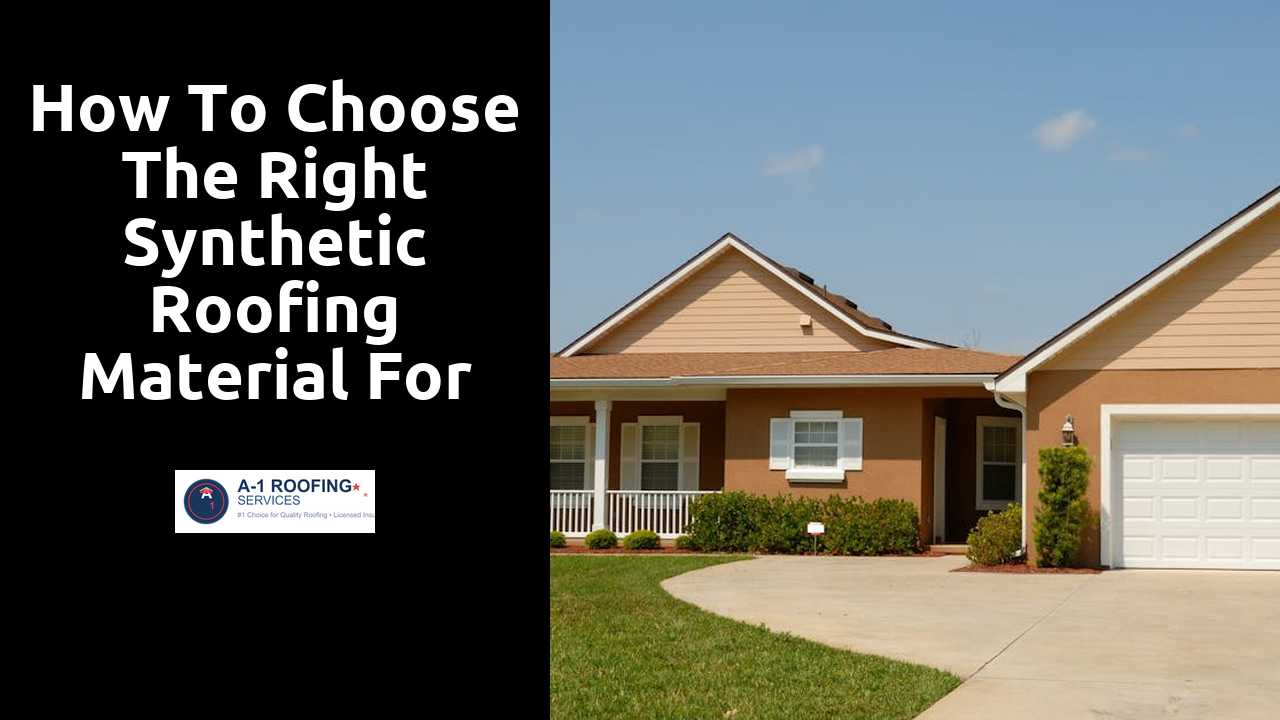
How to Choose the Right Synthetic Roofing Material for Your Home
Table Of Contents
Climate Suitability
Climate plays a critical role in determining the most suitable synthetic roofing material for your home. For regions that experience extreme temperatures, materials such as PVC and TPO can offer outstanding durability and resistance to UV rays. In areas with high humidity and heavy rainfall, choosing a roofing solution that provides superior water resistance, like synthetic slate or rubber, can help prevent leaks and mold growth.
When considering the local climate, it is important to weigh the benefits of insulation and energy efficiency. For example, in colder climates, materials with better insulating properties can help reduce heating costs during winter months. Conversely, in hotter regions, lighter-colored materials can reflect sunlight, keeping homes cooler and potentially lowering air conditioning bills. Tailoring your selection based on these factors can lead to a more sustainable and cost-effective roofing solution.
Discover more here.
Choosing Materials for Different Weather Conditions
Certain synthetic roofing materials perform better in specific climates. For regions that experience heavy snowfall, options like synthetic slate or rubber shingles offer durability and resistance against ice dam formation. Areas prone to high winds benefit from materials designed to withstand gusts, ensuring they remain intact and secure during storms. Choosing the right material based on local weather patterns can minimize damage and prolong the life of the roof.
In hotter climates, reflective roofing options can help reduce cooling costs by deflecting sunlight. Materials such as thermoplastic polyolefin (TPO) or cool roofs made from reflective shingles can significantly decrease heat absorption. Conversely, in areas with frequent rain or humidity, selecting materials with high moisture resistance, such as PVC or certain synthetic tiles, can prevent mold and mildew growth. Evaluating the specific weather conditions your home endures will inform a more strategic choice of roofing materials.
Aesthetic Options
Selecting the right color and texture for synthetic roofing materials can significantly influence a home’s visual appeal. Many manufacturers offer a variety of styles that mimic traditional materials such as wood, slate, or tile, providing options that can enhance the architectural style of any home. Homeowners have the freedom to choose from a palette that ranges from bold, vibrant hues to subtle, natural shades, allowing for personalization that complements the surrounding environment.
Texture also plays a crucial role in the overall aesthetic. Some synthetic options feature a smooth finish, while others may offer a more rugged appearance. The texture not only affects the look of the roof but can also impact how light interacts with its surface, changing the overall ambiance of the home. With thoughtful selection, homeowners can achieve a cohesive and attractive appearance that enhances their property’s curb appeal.
Color and Texture Choices Available
When selecting synthetic roofing materials, homeowners have access to a broad array of color and texture options. Manufacturers often create products that mimic traditional materials like wood, slate, or tile. This allows for greater flexibility in design while still maintaining the advantages of synthetic materials. The various colorations available range from natural earthy tones to vibrant hues, catering to diverse aesthetic preferences and architectural styles.
Texture also plays a significant role in achieving the desired look for a home. Some options offer a smooth finish, while others provide a more rugged appearance that replicates organic surfaces. It is essential to consider how these textures will interact with light and the surrounding environment. Such choices can impact the overall curb appeal and may even influence how well the roof blends with other elements of the home’s design.
Maintenance Requirements
Regular maintenance is essential for synthetic roofing materials to ensure longevity and performance. Most synthetic roofs require minimal upkeep, with periodic inspections recommended to check for debris buildup or signs of wear. Cleaning the surface with gentle water pressure can help remove any accumulated dirt or leaves. Homeowners should ensure that gutters and downspouts are clear to prevent water from pooling on the roof.
In certain climates, the materials may expand or contract, so it is important to monitor the seams and edges for any signs of separation. Some synthetic roofing options may need periodic resealing to maintain their weather resistance. Avoid using harsh chemicals or abrasive scrubbers during maintenance, as these can damage the surface and reduce its aesthetic appeal. Regularly checking for loose panels or damaged areas allows for timely repairs, which can prevent more significant issues down the line.
Caring for Your Synthetic Roof
Regular inspections play a crucial role in maintaining the integrity of synthetic roofing materials. Homeowners should check for any signs of wear, such as cracks or loose pieces, especially after severe weather events. Debris accumulation, including leaves or branches, can trap moisture and lead to potential deterioration. Cleaning the roof periodically helps prevent issues and maintain its appearance.
Most synthetic roofing options require minimal maintenance compared to traditional materials. Simple cleaning methods, like using a hose or a soft broom, can effectively remove dirt without causing damage. In addition, applying a protective coating every few years can enhance the longevity of the roof. Keeping gutters clear strengthens roof performance by ensuring optimal drainage, which is vital in preventing water damage.
Related Links
Maintenance Requirements for Synthetic RoofsAdvantages of Using Synthetic Roofing for Modern Homes